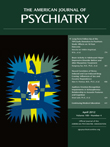A New Perspective on Anhedonia in Schizophrenia
Abstract
Objective:
Previous research provides evidence for discrepancies in various types of emotional self-report in individuals with schizophrenia; patients and healthy subjects report similar levels of positive emotion when reporting current feelings, yet patients report lower levels of positive emotion when reporting on noncurrent feelings. Such apparent discrepancies, which have come to be termed the “emotion paradox” in schizophrenia, have complicated our understanding of what anhedonia actually reflects in this patient population. The authors sought to resolve this paradox.
Method:
The authors reviewed the empirical literature on anhedonia and emotional experience in schizophrenia through the lens of the accessibility model of emotional self-report, a well-validated model of emotional self-report developed in the affective science literature that clarifies the sources of emotion knowledge that individuals access when providing different types of self-report. The authors used this model to propose a resolution to the “emotion paradox” and to provide a new psychological conceptualization of anhedonia.
Results:
Data are presented in support of this new perspective on anhedonia and to demonstrate how cognitive impairments may influence reports of noncurrent feelings in schizophrenia.
Conclusions:
The authors conclude that anhedonia should no longer be considered an experiential deficit or a diminished “capacity” for pleasure in patients with schizophrenia. Rather, anhedonia reflects a set of beliefs related to low pleasure that surface when patients are asked to report their noncurrent feelings. Encoding and retrieval processes may serve to maintain these beliefs despite contrary real-world pleasurable experiences. Implications for assessment and treatment are discussed in relation to this new conceptualization of anhedonia.



